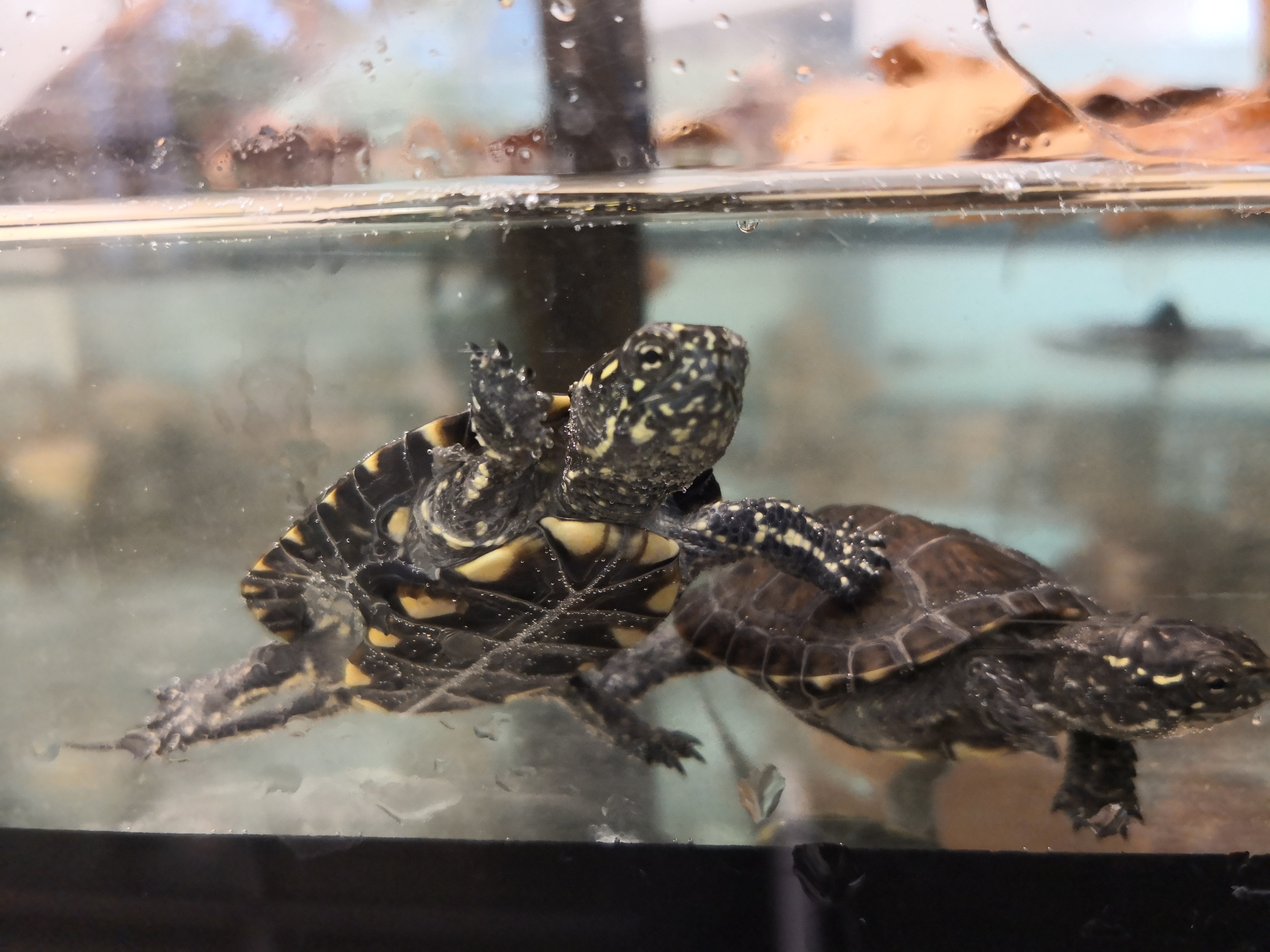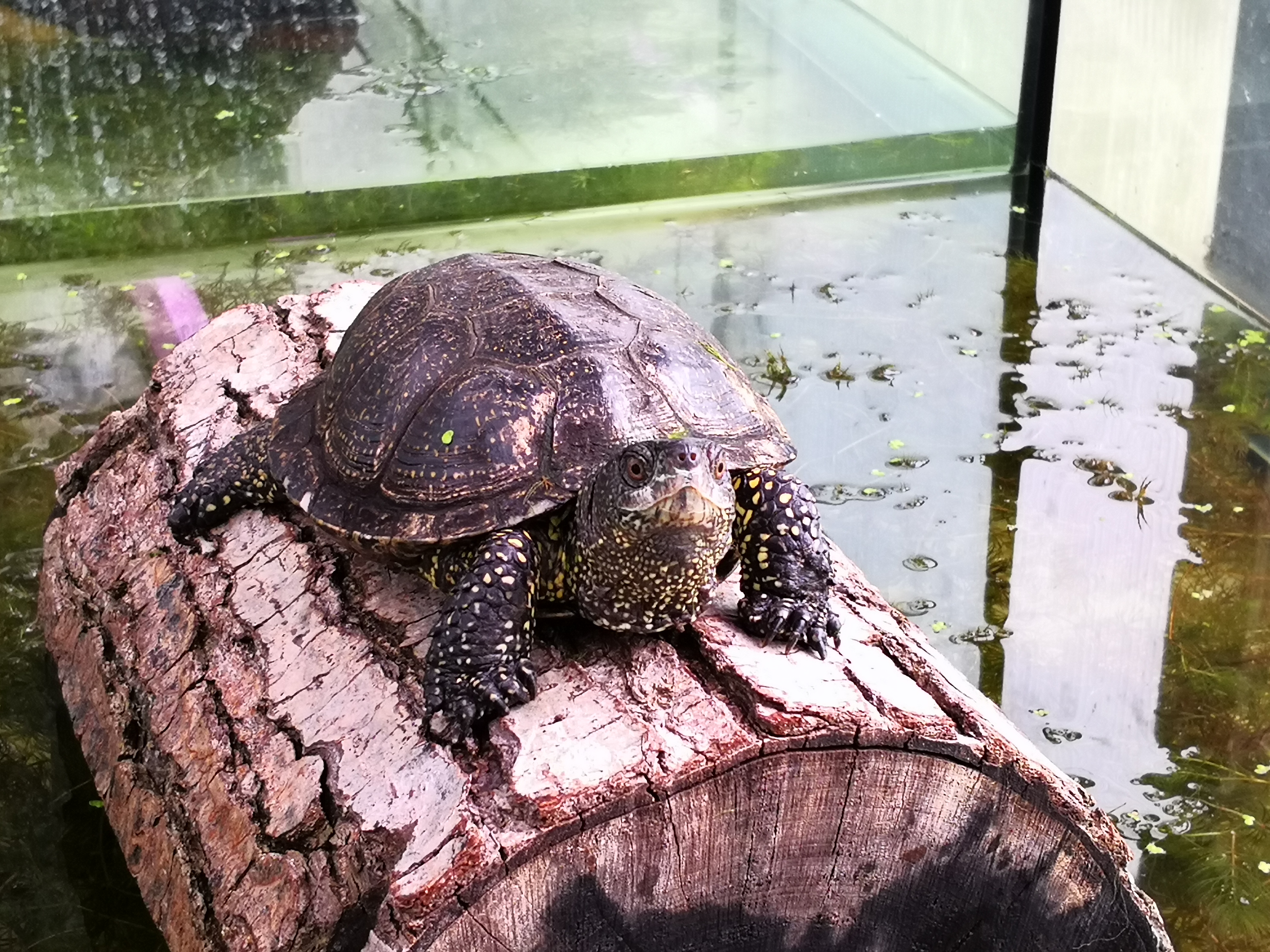After working in design and technology startups for over ten years, I wanted to spend my time in a different and meaningful way. Doing something for our environment, working outdoors and getting my hands dirty.
In May 2020, while the Coronavirus raged through Germany, I started my volunteer work at Naturschutzstation Rhinluch in Linum, a good one hour drive northwest of Berlin. Away from the city and its buzz. The nature conservation station for herpetology (Agena e.V.) is concerned with various projects to manage and protect amphibians and reptiles, and is part of the Landesamt für Umwelt (State Office for the Environment). With the support of numerous volunteers, projects for the conservation and protection of the fire-bellied toad (Bombina bombina), the green lizard (Lacerta viridis) and the European pond turtle (Emys orbicularis) are carried out. They also maintain a central species register for amphibians and reptiles through extensive mapping.
The word ‘Rhinluch’ refers to the peat landscape in Brandenburg. The River Rhin flows through this landscape. This wetland area is located north of Fehrbellin in the Ostprignitz-Ruppin County, and the upper part of Rhinluch covers an area of approximately 23,000 hectares. The suffix ‘luch’ is used to describe several wetlands of Brandenburg—a vast, swampy valley. Extremely rare endangered species live here.




In the ten months that I worked there as a full-time volunteer, life in the small village was downright relaxing. From Monday to Friday, I lived with two biology students in Linum, a hamlet with 600 inhabitants, some cows, horses and surrounded by vast fields and pastures. On Friday evening I drove back to Berlin to celebrate weekend with my wife in a city that was no longer buzzing due to the prevailing COVID-19 pandemic. At work, during the week, things were exciting and everything revolved around the amphibians and reptiles, with which I usually had nothing to do. Very different from working with Excel sheets and SaaS applications in an office setting.
But this time the endangered green lizard and European pond turtle were my top priority. Occasionally vipers or other reptiles in need of help were also brought along. The creatures’ biological rhythm dictated our daily work, which for volunteers included; cleaning the laboratory and the terrariums, taking care of and preparing the food—a daily changing menu consisting of grasshoppers, mealworms, mouse babies or snails. Also the maintenance of equipment, including the infrastructure in various areas spread throughout Brandenburg, as well as maintaining the protected areas. An extensive list of tasks that required an enormous amount of responsibility, commitment and motivation—and that of sometimes very young volunteers. The guidance and supervision of the Leadership Team was therefore essential. Less driven by business growth, a bonus, promotion or salary increase (which in some cases is a justified incentive), but the more by their commitment to the conservancy of our natural resources. An ambitious task and of fundamental importance. After all, we all (including companies) are directly or indirectly dependent on natural resources. Creating impact and trying to make a difference as well as to inspire and motivate volunteers and many other stakeholders; day in and day out. I had seen this drive sporadically during my career, but this time I found the motivation authentic. Something I would like to identify with.
So the work was regularly muddy—whether it was the lizard’s droppings that were removed from the terrariums with tweezers, the homemade oxheart-squid-mouse-babies-pâté for the turtles or wading through muddy outdoor ponds up to your thighs and shoulders, searching for hidden turtles—in ten months I was able to experience, smell and feel what it can mean to work in conservation. Under the skilful management of Dr. Schneeweiß and his team, we were briefed weekly about the activities, but also, for example, about matters of a political nature and how the station dealt with this. The boundary between nature conservation and political interests, but also with private parties and their commercial interests is thin.





The outdoor activities formed a highlight, during which we worked in small teams in the various nature protection reserves, managed by the Station, during the summer months. We worked on different facilities, like building a 6×6m pond for the fire-bellied toad and a huge terrarium for the endangered Vipera berus, the common European adder. We also observed turtles in their breeding activities deep in the Brandenburg swamps. Today, natural habitats in Germany only exist in this province, and without the support of specialized organizations, the turtles are threatened with extinction. Since invasive species, such as the raccoon, significantly disrupt the populations of individual pond turtle populations, predator management, including monitoring, is also integrated into the conservation projects. The primary goal of the Station is sustainable reintroduction through conservation breeding and thus support the population of the European pond turtle in nature reserves in Northern Germany.
Impact
I felt—and still feel btw—the urge to contribute. Theoretically, this can be a lot of different things, but it must have an impact. That my efforts lead to positive change and possibly on a social, ecological and economic level. Why impact? Does it have to do with the fact that I, as a consumer and in my work, have used, consumed, eaten and thrown away resources for years without actually thinking and caring about it? A growing awareness or a self-inflicted annoyance? Whatever it may be; I realise that we have to constantly adapt to social, ecological and economical changes. And how I have a share in the whole with my (daily) decisions, both private and business. Working in nature conservation opened my eyes to how vulnerable nature is and how important it is that we try to overcome the problems we face. Working in conservation or with new technologies that strive for sustainability does not matter in this case. What counts is the impact it generates.
Looking back, this experience has given me new insights and impulses. An experience I can definitely recommend! 🙂
You must be logged in to post a comment.